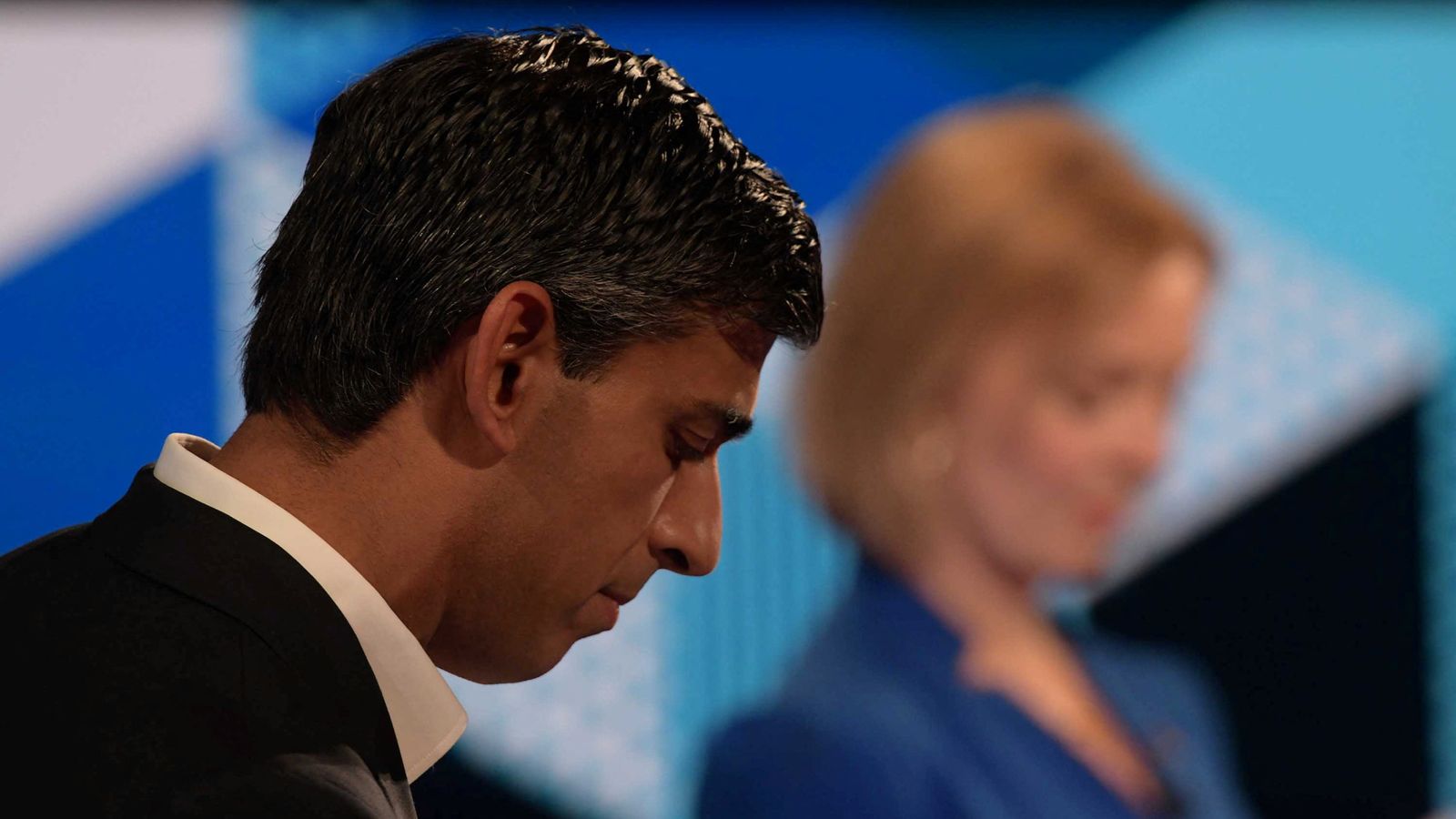Rishi Sunak has assembled a cabinet that Downing Street says “reflects a united party” after the PM promised to form a government of “all the talents”.
The reshuffle by the UK’s third leader this year has changed the gender and ethnicity balance of the cabinet – with some departing ministers having a very short tenure in key positions.
Here are some of the key numbers behind the cabinet reshuffle.
An older cabinet
The average age of cabinet ministers is 52, up from 49 under Liz Truss.
At 42, Rishi Sunak is one of the youngest members of his own cabinet – with only two other ministers the same age: Home Secretary Suella Braverman and International Trade Secretary Kemi Badenoch.
Culture Secretary Michelle Donelan is the youngest at 38 years old.
Some 15 of the 21 full-time cabinet ministers are aged 50 or over.
Mordaunt gets ‘graveyard slot’ – follow live politics updates
22% of those able to attend cabinet meetings are women
The cabinet has become less diverse, both in terms of gender and ethnicity.
In Mr Sunak’s government, 22% of all people able to attend cabinet meetings are women.
This is down from 32% at the start of Ms Truss’s premiership, which was the highest proportion ever for a prime minister’s first cabinet.
It is also lower than the equivalent figure for Boris Johnson (24%) and Theresa May (30%).
Five of the 31 people able to attend Mr Sunak’s cabinet are non-white, including the prime minister.
This is down from seven out of 31 in Liz Truss’s initial top team.
Shortest-serving home secretary replaced after six days
Grant Shapps goes into the history books as the shortest-serving home secretary in modern political history.
Mr Shapps was given the job by former prime minister Ms Truss on 19 October and lasted just six days until being replaced by Suella Braverman on 25 October.
It represents a very swift return to the role of home secretary for Ms Braverman. She had held the post directly before Mr Shapps – but resigned after just 43 days after breaching the ministerial code.
She is currently the second-shortest serving home secretary since 1900.
If she manages to stay in the job for another 19 days, she will become the third shortest-serving person to hold the role.
The first female deputy prime minister was in the role for just 49 days
Dominic Raab is returning to the deputy prime minister post he held from September 2021 to September 2022.
This means Therese Coffey’s spell as the first woman to formally hold the role of deputy prime minister lasted just 49 days.
Only three other people have ever been officially appointed to the role: Conservative politician Michael Heseltine (1995 to 1997), Labour’s John Prescott (1997 to 2007) and the Liberal Democrat leader Nick Clegg (2010 to 2015).
Ten education secretaries in 12 years
Gillian Keegan has become the UK’s 10th education secretary in 12 years.
The turnover has been so great that five separate people have held the job of education secretary in the last 12 months.
Read more:
Rishi Sunak prepares for first PMQs in top job
Analysis: Sunak will need all the help he can get from cabinet
Here’s who’s in and who’s out
Nine work and pensions secretaries since 2010
New Work and Pensions Secretary Mel Stride follows in the footsteps of Chloe Smith (2022), Therese Coffey (2019-2022), Amber Rudd (2018-19), Esther McVey (2018), David Gauke (2017-18), Damian Green (2016-17), Stephen Crabb (2016) and Iain Duncan Smith (2010-16).
Gove returning to cabinet after 111 days
Michael Gove is returning to the cabinet – 111 days after he was sacked by Boris Johnson.
Mr Gove has now held six different cabinet posts since 2010: education secretary, chief whip, justice secretary, environment secretary, chancellor of the Duchy of Lancaster, and levelling up secretary.
Seven transport secretaries in 12 years
Mark Harper is the seventh transport secretary since 2010 and the 14th politician to have cabinet-level responsibility for transport since 1997.










